- Home
- Clive Cussler
Plague Ship tof-5 Page 2
Plague Ship tof-5 Read online
Page 2
The arcing line of tracers converged on the glowing circle, and, suddenly, it appeared as if the Allied plane’s nose was engulfed in fireworks. Sparks and tongues of fire enveloped the Swordfish, metal and fabric shredded by the assault. The propeller was torn apart, and the radial engine exploded as if it was a fragmentary grenade. Burning fuel and hot oil rolled over the exposed pilot and gunner. The Swordfish’s controlled dive, which matched the Kondor’s, became an out-of-control plummet.
The Fairley winged over, spiraling ever faster, as it burned like a meteor. Lichtermann began to level the Kondor. Kessler could see the flaming wreckage continue to drop away. It suddenly changed shape. The wings had torn loose from the Swordfish’s fuselage. Any aerodynamics the mortally wounded aircraft had possessed were gone. The Swordfish dropped like a stone, the flames winking out when the wreckage plowed into the uncaring sea.
When Ernst looked up and across the fifty-foot trailing edge of the port wing, the fear he had been too distracted to acknowledge hit him full force. Smoke trailed from both nine-cylinder engines, and he could plainly hear the power plants were misfiring badly.
“Captain,” he shouted into the microphone.
“Shut up, Kessler,” Lichtermann snapped. “Radioman, get up here and give me a hand. Ebelhardt’s dead.”
“Captain, the port engines,” Kessler insisted.
“I know, damnit, I know. Shut up.”
The first Swordfish that had attacked was well astern, and most likely had already turned to rejoin the convoy, so there was nothing Kessler could do but stare in horror at the smoke rushing by in the slipstream. Lichtermann shut down the inboard engine in hopes of extinguishing the flames. He let the propeller windmill for a moment before reengaging the starter. The engine coughed and caught, and fire appeared around the cowling, flames quickly blackening the aluminum skin of the nacelle.
With the inboard engine producing a little thrust, Lichtermann chanced shutting off the outside motor.
When he kicked on the starter again, the engine fired immediately, producing only an occasional wisp of smoke. He immediately killed the still-burning inboard engine, fearing the fire could spread to the Kondor’s fuel lines, and throttled back the damaged outside motor to save it for as long as he could. With two engines functioning properly and a third running at half power, they could make it back to base.
Tense minutes trickled by. Young Kessler resisted the urge to ask the pilot about their situation. He knew Lichtermann would tell him something as soon as he could. Kessler jumped and hit his head on an internal strut when he heard a new sound, a whooshing gush that came from directly behind him. The Plexiglas canopy protecting his position was suddenly doused with droplets of some liquid. It took him a moment to realize Lichtermann must have calculated the Kondor’s fuel load and the distance back to their base at Narvik. He was dumping excess gasoline in order to lighten the aircraft as much as possible. The fuel-dump tube was located behind his ventral gun position.
“How are you doing down there, Kessler?” Lichtermann asked after cutting off the flow.
“Um, fine, sir,” Kessler stammered. “Where did those planes come from?”
“I didn’t even see them,” the pilot confessed.
“They were biplanes. Well, at least the one I shot down was.”
“Must be Swordfish,” Lichtermann said. “It appears the Allies have a new trick up their sleeve. Those didn’t come off a CAM. The rocket-assisted motors would tear the wings clean off. The British must have a new aircraft carrier.”
“But we didn’t see any planes taking off.”
“They could have seen us coming on radar and launched before we spotted the convoy.”
“Can we radio this information to base?”
“Josef ’s working on it now. The radio’s still picking up nothing but static. We’ll be over the coast in a half hour. Reception should clear by then.”
“What do you want me to do, sir?”
“Stay at your station, and keep an eye out for any more Swordfish. We’re making less than a hundred knots, and one could sneak up on us.”
“What about Lieutenant Ebelhardt and Corporal Dietz?”
“Didn’t I hear that your father’s a minister or something?”
“Grandfather, sir. At the Lutheran church in our village.”
“Next letter home to him, have him say a prayer. Ebelhardt and Dietz are both dead.” There was no more talk after that. Kessler continued to stare into the darkness, hoping to spot an enemy plane but praying he didn’t. He tried not to think about how he had just killed two men. It was war, and they had ambushed the Kondor without warning, so he shouldn’t feel the creeping sense of guilt tingling along his nerves. His hands shouldn’t be trembling and his stomach shouldn’t be so knotted. He wished Lichtermann hadn’t mentioned his grandfather. He could imagine what the stern minister would say. He hated the government and this foolish war they had started, and now it had turned his youngest grandchild into a killer.
Kessler knew he’d never be able to look his grandfather in the eye again.
“I can see the coast,” Lichtermann announced after forty minutes. “We’ll make Narvik yet.” The Kondor was down to three thousand feet when it flashed over Norway’s north coast. It was a barren, ugly land of foaming surf crashing against featureless cliffs and islands. Only a few fishing villages clung to the crags and inlets, where natives eked a meager living from the sea.
Ernst Kessler felt a small lift in his spirits. Somehow, being over land made him feel safer. Not that a crash into the rocky terrain below would be survivable, but dying on the ground, where the wreckage could be located and his body given a proper burial, seemed so much better than the anonymity of dying at sea, like the British pilots he’d shot down.
Fate chose that instant to deal her final card. The outboard port engine, which had been humming along at half power and keeping the big reconnaissance plane in trim, gave no warning. It simply seized so hard that the propeller went from a whirling disc providing stability to a stationary sculpture of burnished metal that added a tremendous amount of drag.
On the flight deck, Lichtermann slammed the rudder hard over in an attempt to keep the Kondor from spiraling. The thrust from the starboard wing and the drag from the port made the aircraft all but impossible to fly. It kept wanting to nose over to the left and dive.
Kessler was thrown violently against his gun mount, and a loop of ammunition whipped around him like a snake. It cracked against his face, so that his vision went dim and blood jetted from both nostrils. It came at him again and would have slammed the side of his head had he not ducked and pinned the shining brass belt against a bulkhead.
Lichtermann held the plane steady for a few seconds longer but knew it was a losing battle. The Kondor was too unbalanced. If he had any hope of landing it, he had to equalize thrust and drag. He reached out a gloved hand and hit the kill switches for the starboard engines. They wound down quickly. The stationary propeller continued to cause extra drag on the port side, but Lichtermann could compensate, as his aircraft became an oversized glider.
“Kessler, get up here and strap in,” Lichtermann shouted over the intercom. “We’re going to crash.” The plane shot over a mountain guarding a fjord with a small glacier at its head, the ice dazzlingly white against the jagged black rock.
Ernst had his shoulder straps off and was bending to crawl out of the gun position when something far below caught his eye. Deep in the cleft of the fjord was a building constructed partially on the glacier. Or perhaps something so ancient that the glacier had started to bury it. It was difficult to judge scale in his brief glimpse, but it looked large, like some kind of old Viking storehouse.
“Captain,” Kessler cried. “Behind us. In that fjord. There is a building. I think we can land on the ice.” Lichtermann hadn’t seen anything, but Kessler was facing backward and would have had an unobstructed view into the fjord. The terrain ahead of the Kondor was broken ground, with ice
-carved hillocks as sharp as daggers. The plane’s undercarriage would collapse the instant they touched down, and the rock would shred the aircraft’s skin as easily as paper.
“Are you sure?” he shouted back.
“Yes, sir. It was on the edge of the glacier. I could see it in the moonlight. There is definitely a building there.”
Without power, Lichtermann had one shot at landing the plane. He was certain that if he tried it out in the open, he and his two remaining crew members would be killed in the crash. Landing on a glacier wouldn’t be a picnic either, but at least there was a chance they would walk away.
He muscled the yoke over, fighting the Kondor’s inertia. Turning the plane caused the wing surfaces to lose lift. The altimeter began to spin backward twice as fast as when he was maintaining level flight. There was nothing Lichtermann could do about it. It was simple physics.
The big aircraft carved through the sky, coming back on a northerly heading. The mountain that had hidden the glacier from Lichtermann’s view loomed ahead. He silently thanked the bright moonlight, because, at the mountain’s base, he could see a field of virgin white, a patch of glacial ice at least a mile long. He saw no indication of the building Kessler had spotted, but it didn’t matter. The ice was what he focused on.
It rose gently from the sea for most of its length before seeming to fall from a cleft in the side of the mountain, a near-vertical wall of ice that was so thick it appeared blue in the uncertain light. A few small icebergs dotted the long fjord.
The Kondor was sinking fast. Lichtermann barely had the altitude to turn the plane one last time to line up with the glacier. They dropped below the mountain’s peak. The glacially shaped rock appeared less than an arms’ span from the wingtip. The ice, which looked smooth from a thousand feet, appeared rougher the closer they fell toward it, like small waves that had been flash-frozen. Lichtermann didn’t extend the landing gear. If one strut was torn off when they hit, the plane would cartwheel and tear itself apart.
“Hang on,” he said. His throat was so dry the words came out in a tight croak.
Ernst had climbed from his position and had strapped himself in the radioman’s seat. Josef was on the flight deck with Lichtermann. The radio’s dials glowed milky white. There were no windows nearby, so the inside of the aircraft was pitch-black. At hearing the pilot’s terse warning, Kessler bent double, wrapping his hands around the back of his neck and clamping his knees with his elbows, as he’d been trained.
Prayers tumbled from his lips.
The Kondor struck the glacier with a glancing blow, rose a dozen feet, and then came down harder. The sound of metal against the ice was like a train racing through a tunnel. Kessler was thrown violently against his safety straps but didn’t dare uncurl himself from his seated fetal position. The plane crashed into something with a jarring bump that sent radio manuals fluttering from their shelves. The wing struck ice, and the aircraft began to spin, shedding parts in chunks.
He didn’t know what was better, being alone in the hull of the plane and not knowing what was happening outside or being in the cockpit and seeing the Kondor come apart.
There was a crash below where Kessler huddled, and a blast of frigid air shot through the fuselage. The Plexiglas protecting the forward gunner’s position had been blown inward. Chunks of ice that were being shaved off the glacier whirled through the plane, and, still, it felt like they were not slowing.
Then came the loudest sound yet, an echoing explosion of torn metal that was followed immediately by the rank smell of high-octane aviation fuel. Kessler knew what had happened. One of the wings had dug into the ice and had been sheared off. Though Lichtermann had dumped most of their gasoline, enough remained in the lines to make the threat of fire a very real one.
The plane continued to toboggan across the glacier, driven by her momentum and the slight downward slope of the ice. But she had finally started to slow. Having her port wing torn off had turned the aircraft perpendicular to her direction of travel. With more of her hull scraping against the ice, friction was overcoming gravity.
Kessler allowed himself a sigh. He knew in just moments the Kondor would come to a complete stop.
Captain Lichtermann had done it. He relaxed the death grip he’d maintained since the shouted warning and was about to straighten in his seat when the starboard wing tore into the ice and was ripped off at the root.
The fuselage rolled over the severed wing and flipped onto its back in a savage motion that nearly tossed Kessler out of his safety belts. His neck whiplashed brutally, the pain radiating all the way to his toes.
The young airman hung dazed from his straps for several long seconds until he realized he could no longer hear the rasping scrape of aluminum over ice. The Kondor had come to a halt. Fighting nausea, he carefully unhooked his belts and lowered himself to the aircraft’s ceiling. He felt something soft give under his feet. In the darkness, he shifted so he was standing on one of the fuselage support members. He felt down and immediately yanked his hand back. He had touched a corpse, and his fingers were covered in a warm, sticky fluid he knew to be blood.
“Captain Lichtermann?” he called. “Josef?”
The reply was a whistle of cold wind through the downed aircraft.
Kessler rummaged through a cabinet below the radio and found a flashlight. Its naked beam revealed the body of Max Ebelhardt, the copilot, who had died in the first instant of the attack. Calling out for Josef and Lichtermann, he trained the light on the inverted cockpit. He spotted the men still strapped to their seats, their arms dangling as limp as rag dolls’.
Neither man moved, not even when Kessler crawled over to them and laid a hand on the pilot’s shoulder. Lichtermann’s head was back, his blue eyes unblinking. His face was dark red, suffused with blood pooling in his skull. Kessler touched his cheek. The flesh was still warm, but the skin had lost its elasticity. It felt like putty. He flashed the light over to the radioman/gunner. Josef Vogel was also dead.
Vogel’s head had smashed against a bulkhead—Kessler could see the blood smeared against the metal—while Lichtermann’s neck must have been broken when the plane flipped over.
The rank smell of gasoline finally burned through the fog in Kessler’s head, and he staggered to the rear of the aircraft, where the main door was located. The crash had crushed the frame, and he had to slam his shoulder into the metal to pop it open. He fell out of the Kondor and sprawled on the ice. Chunks of the fuselage and wing were strewn along the glacier, and he could plainly see the deep furrows the aircraft had gouged into the ice.
He wasn’t sure how imminent the threat of fire was or how long it would be before he could safely return to the damaged Kondor . But with the wind chilled by the ice as it came down off the glacier, he knew he couldn’t remain out in the open for very long. His best bet lay in finding the mysterious building he’d spotted before the crash. He would wait there until he was certain the Kondor wouldn’t burn and then return. Hopefully, the radio survived the crash. If it hadn’t, there was a small inflatable boat stored in the tail section of the plane. It would take him days to reach a village, but if he hugged the coastline he could make it.
Having a plan helped keep the horror of the past hour at bay. He just had to focus on surviving. When he was safely back in Narvik, he would allow himself to dwell on his dead comrades. He hadn’t been particularly close to any of them, preferring his studies to their carousing, but they had been his crew.
Kessler’s head pounded, and his neck became so stiff he could barely turn it. He took bearings on the mountain that hid so much of the tight fjord and started trudging across the glacier. Distances on the ice were hard to determine, and what had looked like just a couple of kilometers turned into an hours-long walk that left his feet numb. A sudden rain squall had drenched him, the water freezing on his coat flaking off in icy bits that crackled with each step.
He was thinking about turning back and taking his chances with the plane when his eye
caught the outline of the building thrust partially out of the ice. As he got closer and details emerged from the dark, he began to shiver with more than the cold. It wasn’t a building at all.
Kessler came to a stop under the bow of a huge ship, constructed of thick wood with copper sheathing and towering over his head, that had become trapped in the ice. Knowing how slowly glaciers moved, he estimated that for the vessel to be so deeply buried it had been here for thousands of years. It was unlike anything he’d ever seen. Even as that thought crossed his mind, he knew it wasn’t true. He’d seen pictures of this ship before. There were illustrations in the Bible his grandfather used to read to him when he was a boy. Kessler had much preferred the Old Testament stories to the preachings of the New, so he even recalled the ship’s dimensions—one hundred cubits long, fifty cubits wide, and thirty cubits tall.
“. . . and onto this ark Noah loaded his animals two by two.” CHAPTER 1
BANDAR ABBAS, IRAN
PRESENT DAY
THE TIRED-LOOKING FREIGHTER HAD LAIN AT ANCHOR off the busy port of Bandar Abbas long enough to arouse the suspicion of the Iranian military. An armed patrol boat was dispatched from the nearby naval base and streaked across the shallow azure waters toward the five-hundred-plus-foot ship.
The vessel was named the Norego and carried a Panamanian registry, if the flag hanging from her jack staff was any indication. From the look of her, she had been converted to container duty after serving her life as a general cargo vessel. Growing up from her deck like branchless trees were five cargo booms, three forward and two aft. Around them were stacks of brightly colored containers piled to just below her bridge windows. Despite the large quantity of containers, she sat high in the water, with at least fifteen feet of red antifouling paint showing below her maximum-load line. Her hull was a uniform blue, but looked as though she hadn’t seen a new coat of paint in some time, while her upperworks were a mismatched shade of green. Her twin funnels were so darkened by soot that the original color was indeterminate. A trickle of smoke coiled from the stacks and hung over the ship in a pall.

 Deep Six
Deep Six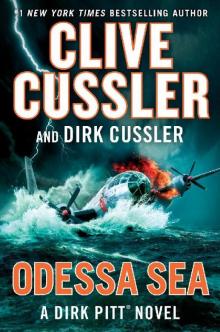 Odessa Sea
Odessa Sea Flood Tide
Flood Tide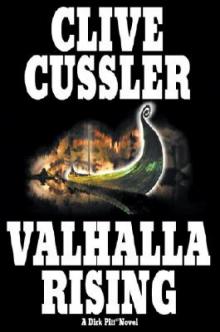 Valhalla Rising
Valhalla Rising Thriller 2
Thriller 2 The Tombs
The Tombs Lost Empire
Lost Empire The Gray Ghost
The Gray Ghost The Eye of Heaven
The Eye of Heaven Polar Shift
Polar Shift The Kingdom
The Kingdom Trojan Odyssey
Trojan Odyssey Shadow Tyrants
Shadow Tyrants Nighthawk
Nighthawk Blue Gold
Blue Gold Serpent
Serpent Lost City
Lost City The Gangster
The Gangster White Death
White Death Inca Gold
Inca Gold The Mayan Secrets
The Mayan Secrets The Pharaoh's Secret
The Pharaoh's Secret The Emperor's Revenge
The Emperor's Revenge Corsair
Corsair Sacred Stone
Sacred Stone The Silent Sea
The Silent Sea The Rising Sea
The Rising Sea Black Wind
Black Wind Fast Ice
Fast Ice Ghost Ship
Ghost Ship Marauder
Marauder The Thief
The Thief Medusa
Medusa Typhoon Fury
Typhoon Fury Journey of the Pharaohs
Journey of the Pharaohs The Navigator
The Navigator The Saboteurs
The Saboteurs Crescent Dawn
Crescent Dawn Skeleton Coast
Skeleton Coast Wrath of Poseidon
Wrath of Poseidon The Mediterranean Caper
The Mediterranean Caper The Romanov Ransom
The Romanov Ransom Treasure
Treasure The Race
The Race The Bootlegger
The Bootlegger Spartan Gold
Spartan Gold Havana Storm
Havana Storm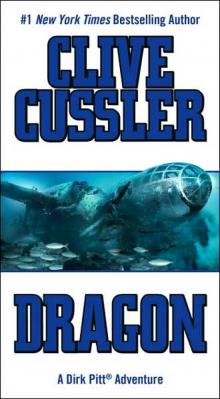 Dragon
Dragon Piranha
Piranha Poseidon's Arrow
Poseidon's Arrow The Cutthroat
The Cutthroat Atlantis Found
Atlantis Found The Jungle
The Jungle The Oracle
The Oracle Treasure / Dragon / Sahara: Clive Cussler Gift Set
Treasure / Dragon / Sahara: Clive Cussler Gift Set Clive Cussler and Dirk Pitt Revealed
Clive Cussler and Dirk Pitt Revealed The Sea Hunters
The Sea Hunters Pirate
Pirate The Striker
The Striker Plague Ship
Plague Ship The Wrecker
The Wrecker Iceberg
Iceberg The Chase
The Chase The Spy
The Spy Golden Buddha
Golden Buddha The Titanic Secret
The Titanic Secret Zero Hour
Zero Hour Fire Ice
Fire Ice Dark Watch
Dark Watch The Storm
The Storm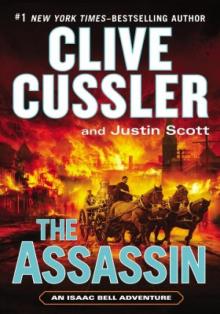 The Assassin
The Assassin Vixen 03
Vixen 03 Arctic Drift
Arctic Drift Night Probe!
Night Probe! Cyclops
Cyclops Medusa nf-8
Medusa nf-8 Shock Wave dp-13
Shock Wave dp-13 Marauder (The Oregon Files)
Marauder (The Oregon Files) Lost Empire fa-2
Lost Empire fa-2 Arctic Drift dp-20
Arctic Drift dp-20 Dirk Pitt 22 - Poseidon's Arrow
Dirk Pitt 22 - Poseidon's Arrow Treasure of Khan dp-19
Treasure of Khan dp-19 Dark Watch of-3
Dark Watch of-3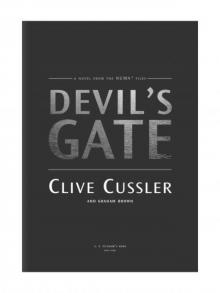 Devil's Gate
Devil's Gate The Sea Hunters II: More True Adventures with Famous Shipwrecks
The Sea Hunters II: More True Adventures with Famous Shipwrecks Flood Tide dp-14
Flood Tide dp-14 The Mediterranean Caper dp-2
The Mediterranean Caper dp-2 Iceberg dp-3
Iceberg dp-3 Sahara dpa-11
Sahara dpa-11 Pacific Vortex! dp-1
Pacific Vortex! dp-1 Deep Six dp-7
Deep Six dp-7 Dragon dp-10
Dragon dp-10 Serpent nf-1
Serpent nf-1 Havana Storm (Dirk Pitt Adventure)
Havana Storm (Dirk Pitt Adventure)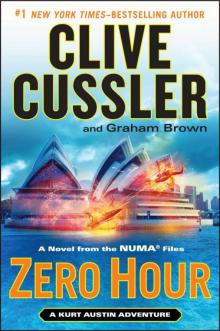 Zero Hour nf-11
Zero Hour nf-11 The Storm nf-10
The Storm nf-10 The Thief ib-5
The Thief ib-5 Lost City nf-5
Lost City nf-5 The Mayan Secrets fa-5
The Mayan Secrets fa-5 White Death nf-4
White Death nf-4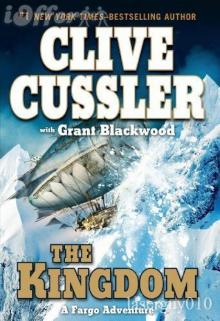 The Kingdom fa-3
The Kingdom fa-3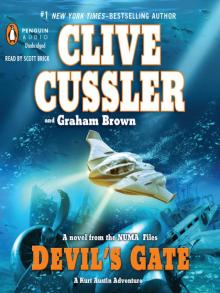 Devil's Gate nf-9
Devil's Gate nf-9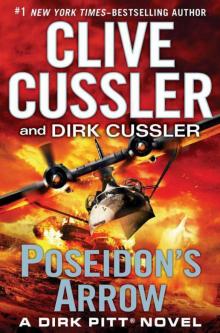 Poseidon's Arrow dp-22
Poseidon's Arrow dp-22 Raise the Titanic dp-4
Raise the Titanic dp-4 Shadow Tyrants--Clive Cussler
Shadow Tyrants--Clive Cussler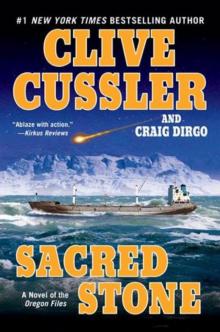 Sacred Stone of-2
Sacred Stone of-2 Skeleton Coast tof-4
Skeleton Coast tof-4 Mirage tof-9
Mirage tof-9 The Jungle of-8
The Jungle of-8 The Emperor's Revenge (The Oregon Files)
The Emperor's Revenge (The Oregon Files) Golden Buddha of-1
Golden Buddha of-1 Blue & Gold
Blue & Gold The Tombs fa-4
The Tombs fa-4 Inca Gold dp-12
Inca Gold dp-12 Treasure dp-9
Treasure dp-9 Atlantis Found dp-15
Atlantis Found dp-15 Black Wind dp-18
Black Wind dp-18 the Silent Sea (2010) tof-7
the Silent Sea (2010) tof-7 The Wrecker ib-2
The Wrecker ib-2 Fire Ice nf-3
Fire Ice nf-3 The Chase ib-1
The Chase ib-1 Sahara
Sahara The Striker ib-6
The Striker ib-6 Polar Shift nf-6
Polar Shift nf-6 The Race ib-4
The Race ib-4 Corsair of-6
Corsair of-6 Cyclops dp-8
Cyclops dp-8 The Navigator nf-7
The Navigator nf-7 Plague Ship tof-5
Plague Ship tof-5 Sea of Greed
Sea of Greed Vixen 03 dp-5
Vixen 03 dp-5 Thriller 2: Stories You Just Can't Put Down
Thriller 2: Stories You Just Can't Put Down